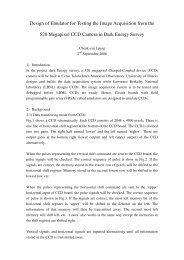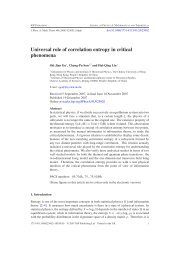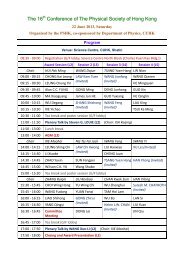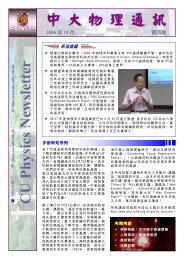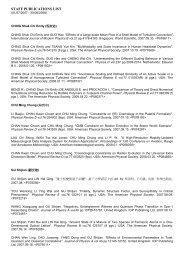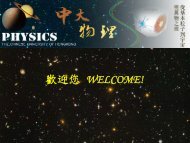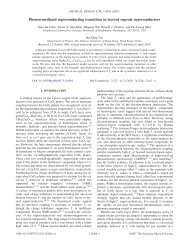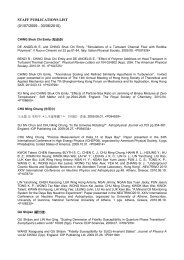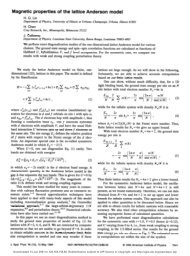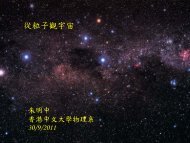19th Issue (Oct-2012) - Department of Physics - The Chinese ...
19th Issue (Oct-2012) - Department of Physics - The Chinese ...
19th Issue (Oct-2012) - Department of Physics - The Chinese ...
Create successful ePaper yourself
Turn your PDF publications into a flip-book with our unique Google optimized e-Paper software.
My Experience as Student and Researcher<br />
<strong>The</strong> third problem I had unsuccessfully worked on in Chicago was about the concept<br />
<strong>of</strong> gauge invariance in electromagnetism in Pauli’s 1941 review paper. Gauge invariance<br />
was invented by Hermann Weyl (1885–1955, Fig. 7) in the years 1918–1929.<br />
I was deeply interested in this beautiful concept and wanted in 1947 to generalize<br />
it. (Why had my fellow graduate students at the time not launched into similar<br />
efforts? I think it is because I was especially interested in group theory and in<br />
the concept <strong>of</strong> invariance in physics, subjects in which most <strong>of</strong> my fellow graduate<br />
students at the time were not interested.)<br />
Int. J. Mod. Phys. A <strong>2012</strong>.27. Downloaded from www.worldscientific.com<br />
by THE CHINESE UNIVERSITY OF HONG KONG on 10/09/12. For personal use only.<br />
Fig. 7. Hermann Weyl (1885–1955).<br />
I started with an important formula in electromagnetism<br />
F µν = A µ,ν − A ν,µ<br />
and generalized it to<br />
F µν = B µ,ν − B ν,µ ,<br />
(A)<br />
(B)<br />
in which B µ is a 2×2 square matrix, unlike A µ , which is a simple 1×1matrix.This<br />
very natural generalization however led to increasingly complicated calculations.<br />
Thus I had to give up. That was in 1947. My aim was to use this generalized gauge<br />
invariance to construct the mutual interactions between the many particles, Λ, K,<br />
etc., which were newly discovered at the time. Figure 8 are reproductions from three<br />
pages <strong>of</strong> my notes <strong>of</strong> 1947.<br />
More and more new particles were discovered in the succeeding few years. So<br />
several times I returned to this attempt at generalizing gauge invariance to formulate<br />
interactions between them. But each time the formulae became increasingly<br />
complex, increasingly ugly, and I had to give up. Finally in 1953 to 1954 I was<br />
1230009-11



